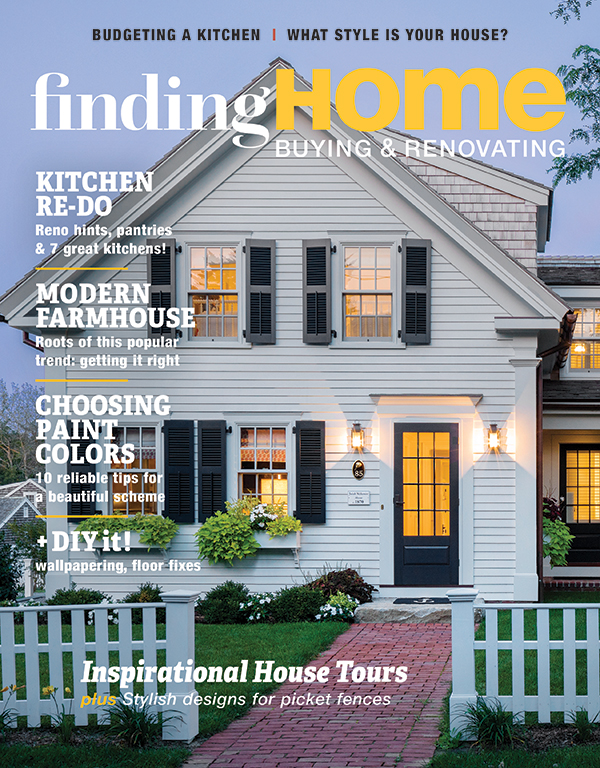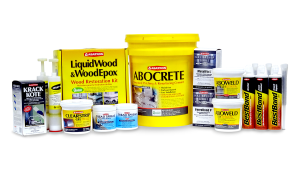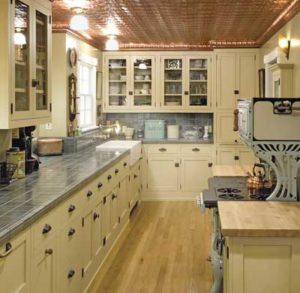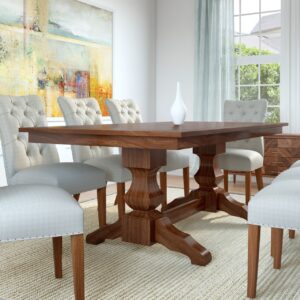We were lured here by the tile. In 2009, we left our beloved 1912 Craftsman home for this 1933 casita, or Spanish bungalow. We were smitten by its gorgeous, over-the-top, green-tiled Art Deco bathroom, an exclamation point on an exceptional house.
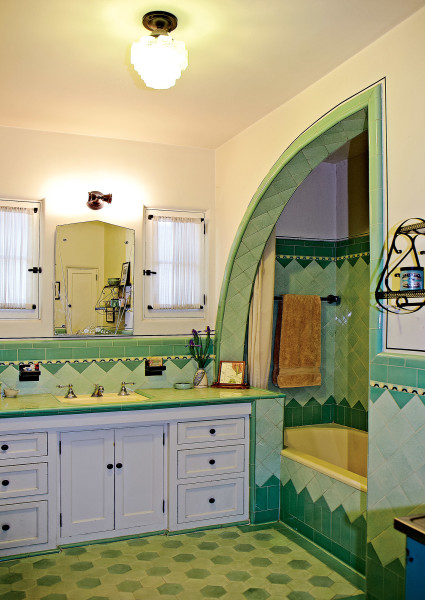
The bathtub recess boasts a magnificent “shark fin” opening.
Jaimee Itagaki
The bathroom is a marvel of color and a time capsule of design—and, we’ve learned, it’s also a love-it-or-hate-it kind of room. It’s been interesting to see visitors’ reactions: They either shriek in delight, or they just smile politely. I imagine the second group is thinking, “Only one sink? Such a small mirror? A combination tub/shower?” We love it; the bath takes us back to flappers and Art Deco opulence, to the advent of modern design and convenience, to a domain unique in design history.
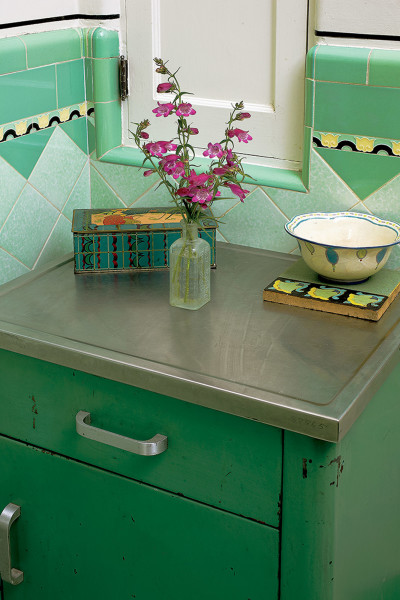
The tile design and bullnose trim are obvious in this corner, where a “shortcut” door opens into the hallway linen closet. The green metal cabinet, likely from a medical or dental office, was a flea-market find.
Jaimee Itagaki
Like many Art Deco bathrooms of the day, ours is a riotous tile showcase: tile on the floor, walls, countertops, and inside the shower. Alternating seafoam- and jadeite-green hexagonal tiles form a honeycomb pattern on the floor.
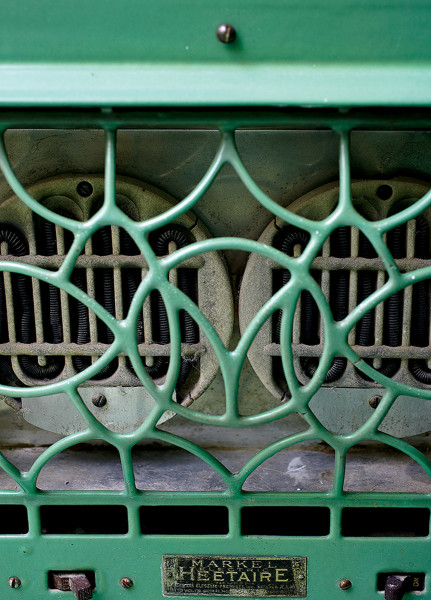
The built-in enameled electric fan/heater combo made by Markel Electric features an attractive grate with a stylized M, presumably for Markel.
Jaimee Itagaki
Wall tiles are squares set on the diagonal, which produces the geometric zigzag pattern so common in this era. The accent border offers a yellow-and-black tulip design. Narrow bullnose tile trim throughout rounds the corners. Original fixtures are butter yellow. (Other popular colors of the time included salmon pink, orchid purple, and black.)
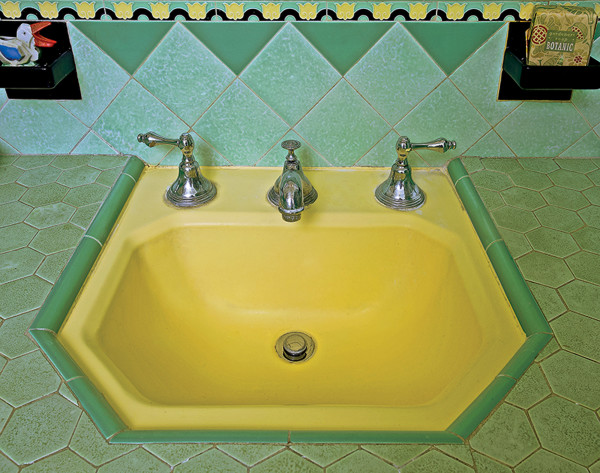
The butter-yellow sink matches the toilet and bathtub.
Jaimee Itagaki
Our bathroom is 7 1⁄2′ x 9′ with an additional 3′ x 3′ toilet niche. It’s relatively simple—no fancy elevated tub deck or enclosed water closet here. We’ve been told the shape of our unusual shower portal is called a “shark fin.” At over 7′ tall, it does suggest prowess. A wall heater labeled “Markel Heetaire” remains, no longer operable but offering a decorative grate.
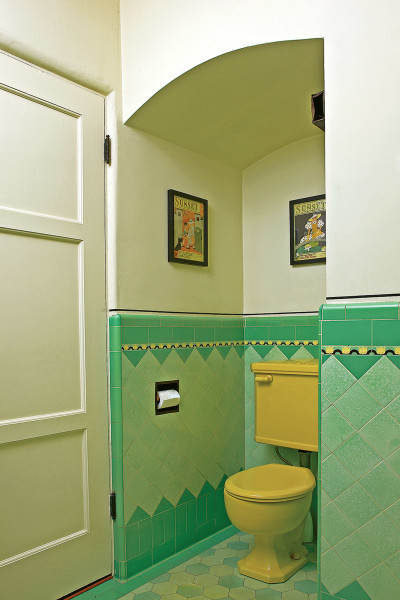
The toilet niche is typical for an Art Deco bathroom; Sunset magazine covers on the walls date to 1933, the year the house was built.
Jaimee Itagaki
The treatment may appear garish to some 21st-century eyes, but these candy-colored rooms beg for preservation. Our bathroom is not what you’d call timeless; in fact, it is an undeniable period piece. But it’s sure not fuddy-duddy. In our eyes, no amount of modernizing, no steam shower or his-and-hers vanity could improve upon its brilliance.
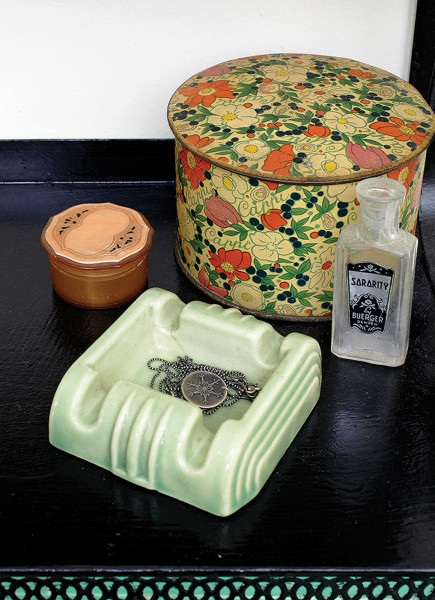
The room has vintage pieces collected over 20 years: a floral Capri Dusting Powder tin, a jar from the Sorority line by The Buerger Brothers in Denver, a jadeite Deco ashtray, a celluloid container from a vanity set.
Jaimee Itagaki


